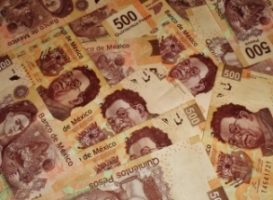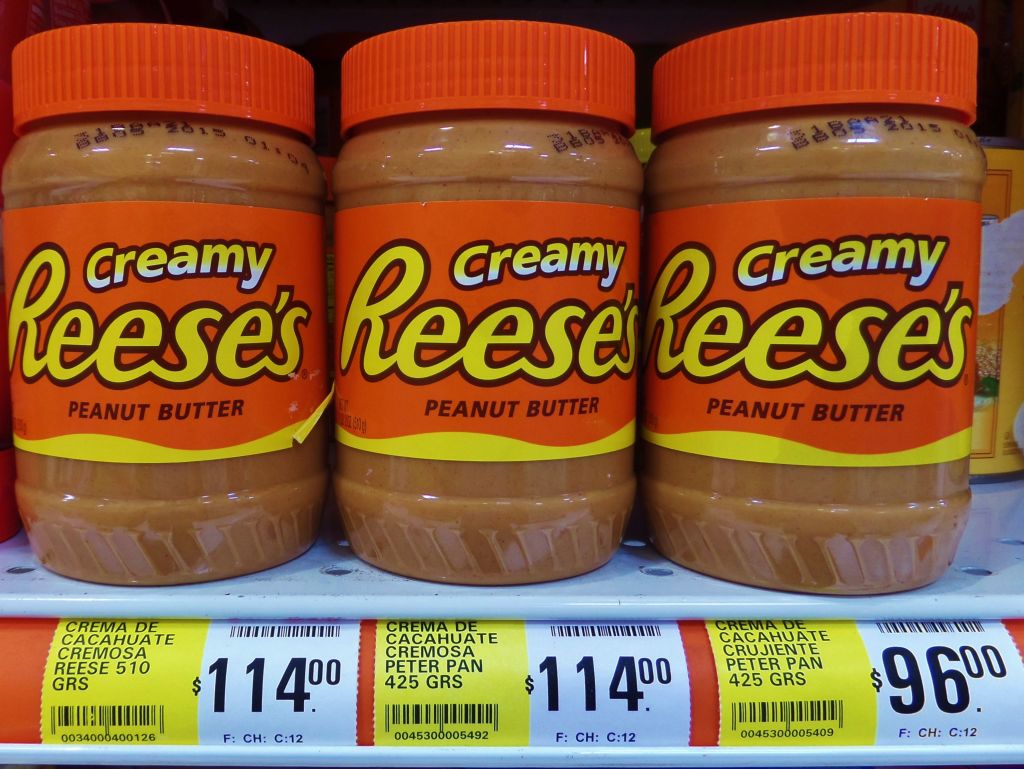
Inflation in Mexico is not a very often mentioned topic. But the warning bells have been going off in the markets and this could pose some hard times ahead for the economy in Mexico. We wanted to take a deeper look into what is going on in the economy and how it can effect you either if you are traveling to Mexico or have moved to Mexico.
Inflation nation! How inflation is rising and nobody is taking note
If you are familiar with Mexico or in Mexico you know that many people don´t really watch the news or pay attention to the financial world. Most people go about their daily lives focused on family, work and just living. What you may of noticed recently though is the exchange rate between the peso and US dollar. It has been flirting with the 20 pesos to the dollar mark. This is affecting inflation in Mexico, but you don’t really hear anyone talking about it.
A year on year comparison of the exchange rate between the US dollar and Mexican peso went from 17.06 to 19.46. That is a whopping 14.07% change. Imagine someone telling you that your total savings and paycheck are worth so much less now. That would be a shock to many. Of course, many in Mexico do not have much travel and business outside of the country so exposure is limited to the swings in the value of the peso. However, there is inflation in Mexico that is creeping into the daily lives of those who live in Mexico. But what is a normal inflation rate and what does the Bank of Mexico hope to achive? We will talk about this next.
What are the targets for the Bank of Mexico for inflation?
Inflation is not necessarily a bad thing. It is nice to have products and services raise in value, but at the same time wages need to raise as well to stay consistent with purchasing the products. Some inflation can mean that the economy is growing. Wages at the same time can raise, but as anyone who knows Mexico, wages lag behind inflation. This puts people unknowingly behind and with less buying power.
A year on year look at August 2015-August 2016 shows there was a 2.73% inflation in Mexico. This is a healthy and balanced amount. Currently the Bank of Mexico has a target of 3% inflation.
Twice in 2016 the Bank of Mexico has raised interest rates to stem inflation as a cautionary measure.
But of course, as the saying goes, the devil is in the details. How does the Bank of Mexico calculate the inflation rate? Does this reflect the average consumer? We take a look below at some random things and calculate the percentage of inflation.
How is inflation in Mexico changing prices?
Inflation is a sneaky thing. It might not be noticed because even if you see a peso here and there change, you don’t really think about it. However, wages do not go up and your buying power is decreased without most people noticing. We have been on the lookout to see what prices have been changed and how this effects the day to day consumer.
Many things in Mexico are seasonal and there are different prices throughout the year. We took these things into account. Some of these things might be so simple and things you do not buy, but overall they reflect how prices have changed in Mexico.
- 1 liter drink of flavored water. The price has gone from 20 pesos to 25 pesos. That is a 25% increase.
- Bananas 10 pesos a kilo to 14 pesos a kilo on average. That is a 40% increase.
- Gas for your car. June 20th, 2016 14.03 pesos a liter compared with September 20th, 2016 14.81 pesos a liter. This is a 5.56% increase in just 3 months.
- Sandwich and drink at Tortas Santa Fe, 62 pesos to 68 pesos. That is a 9.68% increase.
We often talk with restaurant owners about prices. Some that have a set menu often have to keep raising the prices in order to make a profit because food cost keep going up. We also see how hard it is for many restaurants to serve a meal under 100 pesos. Even though many people in Mexico make less than 400 pesos a day, it can be hard to eat out.
This all goes to show that prices are rising. The Bank of Mexico uses CPI (consumer price index) to collect data on inflation in Mexico.However, this way of calculating inflation can be different in how it affects daily consumers. Since this topic affects us all, how do we know when it might change or will prices just continue to rise? We examine this next.

Economic signals to watch for changes to inflation in Mexico
How will we know when inflation might rise or slow down in Mexico? Here are three things to look at.
- Watch the price of crude. Mexico´s top export is crude petroleum, which accounts for $37 billion. This is about 9.2% of the economy.
- Central Bank of Mexico interest rate decisions. The next two dates are September 29th, 2016 and November 17th, 2016. Usually if the interest rate goes up, so does the value of the currency. This in turn raises the buying power internationally and lowers inflation.
- There are outside factors as well that affect the rate of the peso and in turn affect inflation in Mexico. Some of these factors include the health of the US economy. Since the US is the major trading partner, it´s health effects the purchases from Mexico. We have also seen outside political factors sway currency values as people worry about protectionism in the United States and resulting damages to existing trade.
How to protect yourself from inflation and take advantage
Inflation in Mexico is looking like it will affect prices more with big exchange rate swings. This can affect everyone, so how can you manage your exposure to it? Are there ways you can take advantage of financial ups and downs? Well, it will depend on where you are and what currency your money is in. Here are possible ways to buffer yourself against inflation and currency devaluation depending on where you are.
As an outsider not in Mexico
- With the Mexican peso at historic lows you can take advantage of a cheaper vacation. However, you will need to book correctly. Many all inclusive hotels, transportation and tours are priced in USD. So you might end of paying the same rate. How then can you save money on your vacation? By booking at local hotels, looking at individual websites and planning to eat out at restaurants rather than at an all inclusive hotel. You can actually save hundreds vacation over last year.
- If you are looking to invest in real estate in Mexico, your money can go further in areas where property is normally listed in pesos. This can mean in neighborhoods that are geared toward Mexican buyers and areas that are not considered areas of major foreign investment.
As someone living in Mexico
Here are some examples of how you can protect yourself from inflation if you are living in Mexico.
- For those that own real estate and have been thinking of selling, this might be a good time to sell. If you live in an area where the USD is the standard currency used for listing a property you can potentially take advantage of the currency rate. Here is an example: You bought a condo 5 years ago for 1,000,000 pesos ($74074 USD) at 13.5 pesos to the USD. Now if you sold the condo today for 1.436,295 pesos you would be selling at the same purchase price in dollars. You would not pay any capital gains taxes and have an increase in 436,295 pesos. If you invested in an area where real estate is priced in pesos you just might extend your buying power.
- If you are an expat living in Mexico now can be a good time to take advantage of the currency rate. You can move money to pesos for your bank account in Mexico. One big advantage is the fact you can get interest in Mexican bank accounts. This can be around 2-3% interest.
- Avoid buying imported products like European cheeses and meats because these will have the burden of the highest price inflation.
- If you have pesos and have thought about buying real estate, you might look at buying in areas or neighborhoods where prices are normally priced in pesos.
- Buy local. Many products made in Mexico have not seen the price inflation as other imported products. Things like Mexican alcohol and wine, local cheeses and snacks will all save you from inflated prices.
- Buy now, save later! Products in the store now were purchased in the past at a lower rate. As the peso has lost ground, the next time these products are imported to Mexico it will be more costly. These costs will be passed on to the consumer. Buying in bulk now can save some money in the future. Also, when you think about vehicles that are for sale now or used vehicles, these should be a better deal now as cost rise do to the exchange rate.
Please note that opinions in this article are for your consideration. Everyone´s circumstances are different. Please consult a financial advisor when making decisions.
Is inflation in Mexico effecting you? If so how? Let us know in the comments below?


I am glad someone is talking about inflation in Mexico. It seems like the peso has taken a good beating lately and even though Mexico has raised the interest rate the peso is stuck at 19.something. Now the UK is having a weakened currency and that only makes the dollar stronger. I do see some products staying the same price since those countries are also loosing against the dollar. Maybe the countries with the weakened currency will start trading more.
I wish more real estate in Playa Del Carmen was priced in Pesos. The dollar has changed so much that the inflation of the prices for non US accounts ha risen. Like myself, the market has changed a lot and some Mexican and other foreign buyers are getting pushed out or it is harder to buy.
I see the peso has risen 1.5 % after some lows. People are saying it is for the Trump Clinton debates and how Trump looks like he will loose now but I think they are not looking at the factors of the oil price rising and the interest rate hike in Mexico last week. You article here was a good forerunner to what is going on and your advice looks pretty solid for people looking to live or visit Mexico. Please keep us informed how things are looking from there.
I think this next year will be interesting in Mexico. Inflation looks inevitable and how people deal with it will be interesting. It is good much of the economy in Mexico is local and better when people buy local and are not so interconnected with inflation of the world.